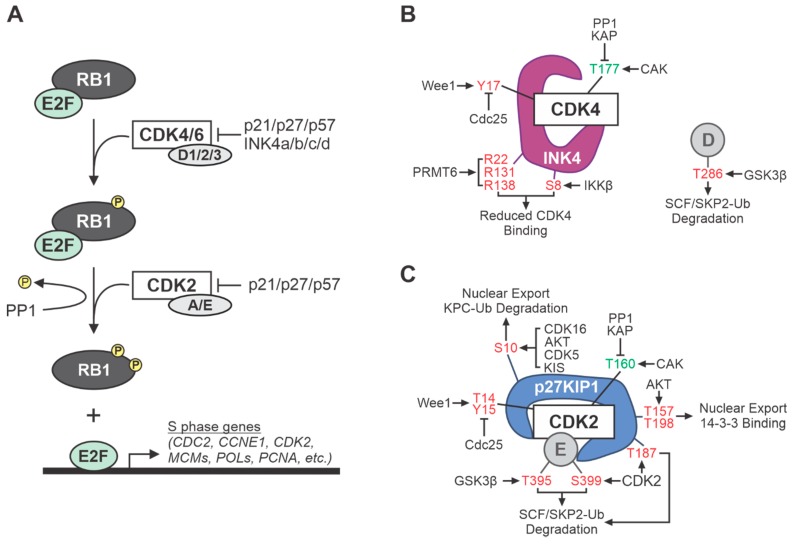Figure 1.
Overview of cell cycle cyclin-dependent kinase (CDK)-related signaling and regulation. (A) Several cell cycle CDKs inactivate RB1, promoting progression into S phase. RB1 binds and sequesters E2F transcription factors throughout G1. CDK4/6-cyclin D complexes phosphorylate RB1, priming it for subsequent phosphorylation by CDK2-cyclin A/E. Hyper-phosphorylation of RB1 causes release of E2F, enabling transcription of genes necessary for S phase and DNA synthesis. Two families of CDK inhibitors, CIP/KIP (p21/p27/p57) and INK4 (a/b/c/d), prevent RB1 phosphorylation; thereby halting cell cycle progression. (B) INK4 family members specifically inhibit CDK4 and CDK6 activity by preventing CDK-cyclin D complex formation. (C) CIP/KIP family members inhibit the various CDKs by binding the CDK-cyclin holoenzymes. Sites of post-translational modification in (B) CDK4, INK4, and cyclin D or (C) CDK2, p27KIP1, cyclin E that either promote (green) or inhibit (red) the function of each factor, as well as the modifying enzymes involved, are denoted.

